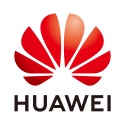Huawei on Mission to Boost Antenna Efficiencies
Base station antenna innovation is a top priority for Huawei.

Base station antenna innovation is a top priority for Eric Zhao. Perhaps this is not too surprising – Zhao is after all the president of Huawei’s antenna business unit – but, importantly, he stresses that Huawei’s antenna R&D, comprising a dedicated 1,200-strong workforce, is firmly grounded in meeting operator requirements: greater capacity, broader and deeper coverage, less energy loss, and lower total cost of ownership through cell-site simplification.
“Greater antenna efficiencies are essential to improve the user-experience and help operators achieve commercial success,” says Zhao. “Major operators worldwide are very willing to innovate with Huawei.”
Through joint innovation with operator partners, Huawei has developed a three pronged approach to boost antenna efficiencies. The first line of attack is to improve spectrum efficiencies in different frequency bands, including sub-3GHz, through innovative MIMO, massive MIMO, and beamforming solutions.
Greater deployment efficiencies, which make installation of antenna advances easier and faster – even on cell sites with limited space – is another collaborative focus with carriers. This not only means producing lighter and smaller antenna ‘boxes’ but developing integrated products that can combine different frequency bands – ultra-wideband – and accommodate different generations of cellular technologies, including 5G.
Third, Zhao says Huawei is working closely with industry to maximize energy efficiencies and lower operators’ electricity bills, not just through antenna advances but power-consumption innovation across the entire RAN.
As a RAN supplier, Zhao makes the not unreasonable claim that Huawei has an advantage over “pure” antenna vendors when working with operators. “We can look at antenna R&D from a wireless network perspective,” he says. “Antenna and wireless equipment are not separate; they’re linked.”
Make every hertz count
Zhao and his team are generating greater spectrum efficiencies from both C-Band (3.5GHz) spectrum (commonly used for 5G NR) and sub-3GHz frequencies (supporting most services at 2G, 3G, and 4G, but also, increasingly, new radio).
“The user base of mobile networks is increasing significantly, so the capacity needs to be higher and the user experience needs to be significantly improved,” says Zhao. “Usually to increase capacity, you may increase the number of sites or you may add more spectrum, but this means more costs. We have another solution and that is to enhance spectrum efficiency, which can significantly improve network capacity.”
Deploying 64T6R massive MIMO, using Huawei’s innovative multi-array antenna configuration, Zhao has shown that operators can enjoy increased spectrum efficiency by between five and 10 times when compared with 2T2R deployments.
Another Huawei innovation is ultra-resolution beam, or URB. A unique adaption of beamforming technology, URB allows base stations to radiate more accurate beams that can dynamically track devices. “We’ve demonstrated that our ultra-resolution beam technology can add a further 15% spectrum efficiency improvement,” adds Zhao.
Operators are of course also keen to boost capacity of their existing sub-3GHz assets, since they offer longer signal reach than higher frequency bands. “With greater spectrum efficiencies at sub-3GHz spectrum, they can balance bandwidth and coverage,” say Zhao.
With Huawei’s 8T8R sub-3GHz deployment – again, using its multi-array antenna – capacity can be increased by between 3 and 4 times compared with the LTE 2T2R baseline. Then add in URB and spectrum efficiencies improve by another 15%.
Deployment efficiencies
When it comes to cell site space for base station antennas, operators are typically constrained. Moreover, if they want to add equipment, they may well have a long wait before they get the necessary permission. This, in turn, lengthens time-to-market. And if permission is granted for extra equipment, cell-site maintenance costs inevitably increase.
“We know that space and power is limited, so there’s some conflict between 5G deployment requirements and the reality,” observes Zhao. “Therefore, we had to find another solution.”
The solution is Huawei AAU Blade Pro, an “all-in-onne” concept that integrates active and passive antennas into one box. The active antenna supports massive MIMO for 5G NR, while the passive antenna supports other “Gs” in sub-3GHz spectrum.
Where it is truly unique, says Zhao, is that the active antenna is attached behind the top of the passive antenna. Using a commercial deployment of metamaterials – an industry first – there is no signal interference between 5G signals and radiation from other cellular technologies.
“There are different layers of equipment in one tower, and wireless communication is the most effective at the top”, explains Zhao. “Through the all-in-one solution we are able to consolidate the difference layers and place it at the top of the tower to achieve higher performance.”
Better use of energy
Antenna energy loss causes multiple problems for operators. It makes sustainability targets more difficult to achieve and pumps up electricity bills. Wasted radiation energy can also create ‘noise’ and degrade network performance.
One way Huawei is combating energy inefficiencies is through full-band SDIF (signal direct injection feeding) technology, which means replacing traditional electrical cables inside antennas, which are not the most efficient way to transfer a signal, with a metal structure that reduces net energy losses.
“We can achieve 10-15% energy improvement using SDIF,” says Zhao, “and our ambition is to keep on improving energy efficiency through continuous innovation.”
Zhao adds, however, that antenna energy efficiency is a relatively new industry concern and more work is needed to develop standards and benchmarks. Huawei is already actively involved in this work, which includes collaborating closely with the Next Genetration Mobile Network Alliance on its Green Future Networks program.
Huawei Technologies Co. Ltd
This content is sponsored by Huawei. The Light Reading editorial staff has no involvement in producing sponsored content, verifying its accuracy or otherwise ensuring that it meets our editorial standards.
About the Author(s)
You May Also Like











